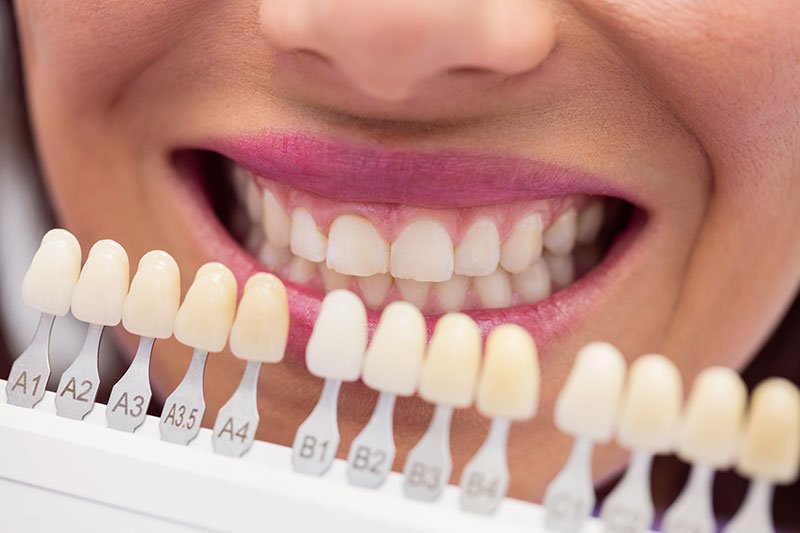Menu
Free Consultation

Aesthetic filling, which is one of the most common dentistry procedures, ensures the preservation of the natural tissues of the teeth. It is a procedure performed using composite filling materials. It is a safe solution for changing or restoring tooth color, as well as for the treatment of gaps (diastema) between teeth and teeth that are worn, worn, chipped or severely damaged by decay due to various reasons.
Aesthetic filling treatment is considered to be the fastest and least invasive procedure to achieve an impressive smile today. Composite filling materials are created according to nanotechnologies and are very close to the natural properties of the hard tissues of the tooth. Therefore, they can be preferred for direct restoration of teeth.
Teeth that have not previously undergone endodontic treatment usually remain alive. Thanks to aesthetic filling application; the size, shape and color of the teeth can be restored. In addition, the contribution of aesthetic filling should not be ignored in protecting the tooth from possible future damage.
Aesthetic filling is a long-term functional filling that harmonizes with the patient's natural tooth color. As a result of the developments in today's dentistry, the use of metal has decreased and has been replaced by porcelain and plastic alloys. These materials, which exactly match the tooth color, have perfectly replaced traditional amalgam fillings.
Aesthetic filling procedure is an excellent aesthetic and functional solution as it does not involve the loss of healthy teeth. Aesthetic filling, which can be placed completely inside a living tooth, can prevent the formation of new tooth decay in the area.
Ceramic or composite materials can be used in aesthetic filling treatment. Aesthetic filling, which is a minimally invasive procedure applied for various problems such as discolored, broken, cracked, sensitive or painful teeth due to various reasons; It is often preferred for a fast, durable and aesthetic solution.
Aesthetic filling treatment is applied under local anesthesia. Therefore, the patient does not feel any pain or soreness during the procedure. First, the integrity of the tooth to be treated is checked. Anesthesia is applied and expected to take effect. If there is decay in the tooth, the decayed parts are first removed with the help of special tools. After the area is completely cleaned, a color that is compatible with the patient's natural tooth color is selected. A special substance is applied to give the tooth enamel the desired shape.
The most important step of the procedure is to enlarge the area needed to place the filling and to fix the filling to healthy tooth tissues by joining the shaped surfaces. In the next step, the filler is hardened with the help of a curing light. This process is repeated at each step as the filling is placed layer by layer. The anatomical shape of the tooth and the grooves are created. Then, the bite test is performed and the filling height is evaluated.
People with abrasion, fracture and decay in their teeth due to trauma, inadequate filling or different reasons are considered candidates for aesthetic filling treatment. In addition, the aesthetic filling procedure can be used to fill the gaps between the teeth and to change the color and shape of the teeth.
Aesthetic filling procedure may come to the agenda at the point of eliminating decays, abrasions and fractures that occur in the teeth over time due to insufficient oral hygiene or various reasons. Thanks to aesthetic filling treatment, it may be possible to restore the old form to decayed or broken teeth.
At the same time, aesthetic filling treatment can be used to remove permanent discolorations that do not respond to professional teeth whitening applications, to repair teeth that have decayed or broken for any reason, to close the gaps between the teeth and to lengthen the length of the teeth. Since the aesthetic filling can be adjusted according to the color of the patient's own teeth, it provides a natural appearance that is compatible with natural tooth enamel. Another advantage of aesthetic filling is that it is an effective and reliable dental procedure that does not cause any damage to the teeth or gums.

Composite filling or ceramic filling can be used in aesthetic filling treatment.
Composite filling is one of the most commonly used filling types. It can be customized to match the tooth color. A composite filling is a mixture of acrylic resin reinforced with powdered glass filler. The composite filling, which can be applied to repair or restore teeth, is extremely durable and resistant to breakage. In addition to providing highly aesthetically successful results, the composite filling is micro-mechanically bonded to the tooth structure and provides more support. It is a functional solution for patients with metal allergies as it does not contain metal.
For the metal to be placed, more tooth structure has to be removed. Since this is not the case with composite fillings, it may be possible to preserve the natural tooth structure. The composite resin does not wear out over time and the color of the teeth does not change. Composite fillings can act as filling material for tooth gaps. They can also be used to fill gaps between teeth, restore worn tooth enamel, fix chipped or cracked teeth and create a natural tooth structure.
Ceramic filling material, which is usually made of porcelain, is more resistant to staining than composite resin filling material. When it adheres to the teeth, it provides a good seal and restores the strength lost by the tooth. Due to their similarity to natural tooth enamel, they cannot be easily distinguished from natural teeth.
Since ceramic filling has high durability, it lasts longer than metal amalgam. Due to its non-toxicity, ceramic fillings do not expand, shrink and leak.
Aesthetic filling treatment is usually completed in one session. Depending on the number of teeth to be treated and the size of the problem, the duration of the procedure may vary depending on the patient. However, aesthetic filling usually takes between 30 minutes and 1 hour.
Some situations where aesthetic filling treatment is preferred are listed below:

If routine oral and dental care is applied completely and dentist examinations are not interrupted, no deformation occurs in aesthetic fillings, and problems such as leaking or spacing do not occur. During routine dentist examinations, the necessary care processes for aesthetic fillings are applied. In this way, aesthetic fillings can be made to last longer.
The lifespan of the aesthetic filling may vary depending on how much attention is paid to oral and dental care for each patient. At the same time, the quality of the material used in aesthetic filling treatment, the expertise and experience of the dentist who performs the application are among the factors affecting the life of the aesthetic filling.
In addition to these, the location of the aesthetic filling and how big it is are considered to be factors related to the lifespan of the filling. If due care is taken to the points mentioned above, the lifespan of aesthetic fillers can vary between 5 and 7 years.
Aesthetic filling prices may vary depending on the number of teeth to be treated, whether there is a need for different dentistry procedures other than filling, the quality of the material used, the location of the tooth to be treated, the current condition of the tooth, the price policy of the clinic where the treatment will be applied and similar factors.
